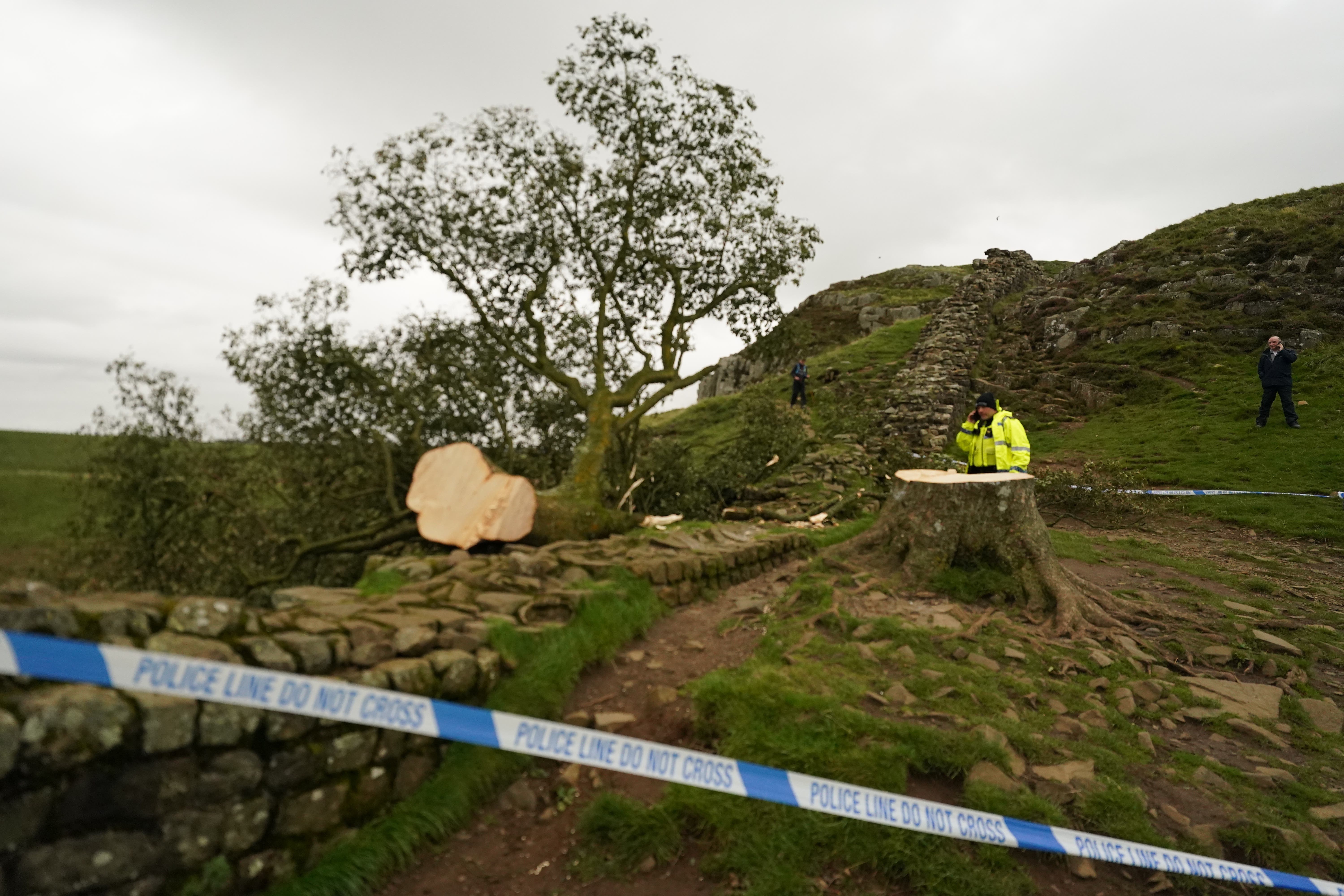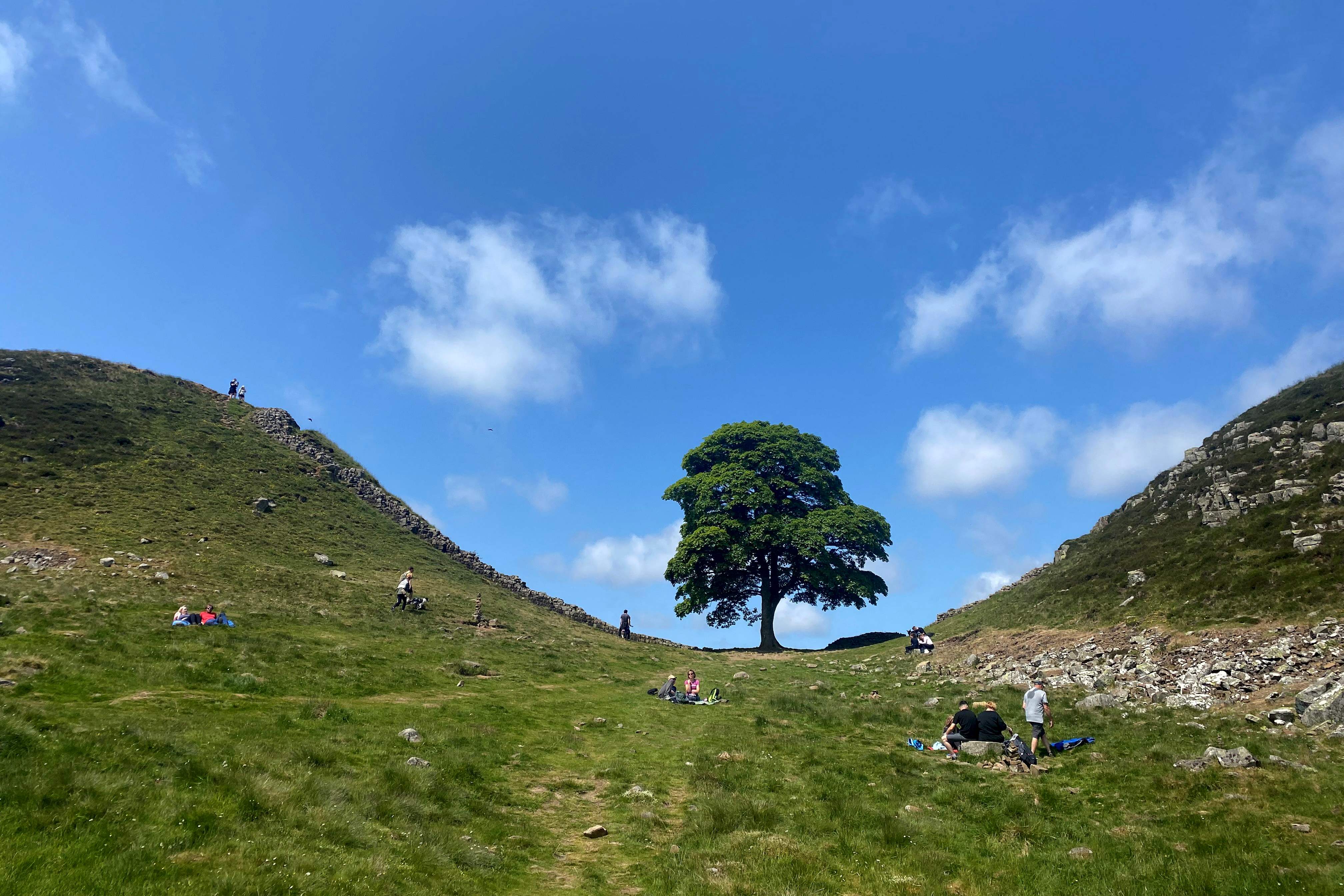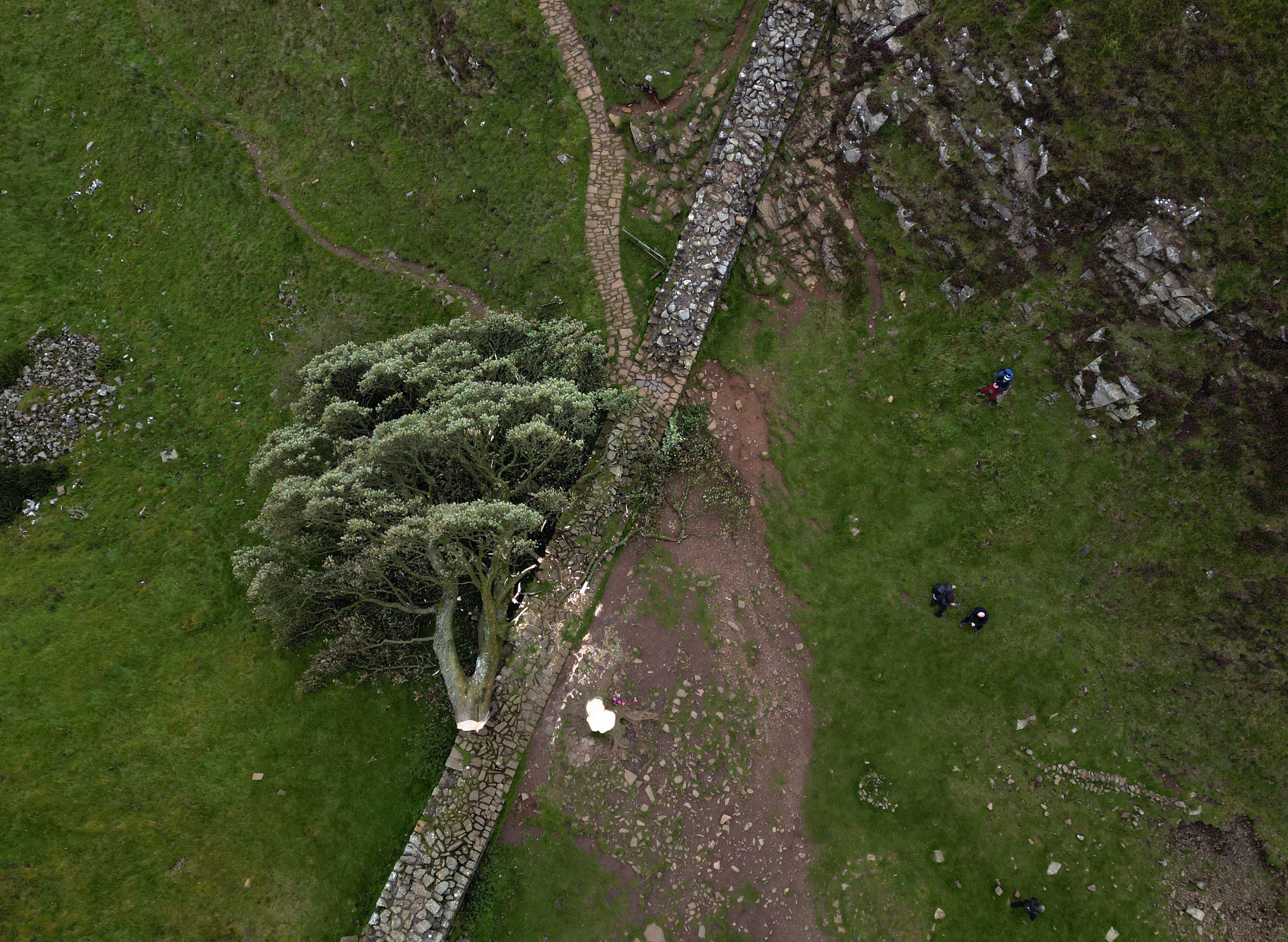Can the Sycamore Gap tree be saved?
Widespread outrage and upset as police believe cutting down of tree was deliberate act of vandalism
Striking a note of optimism after the iconic Sycamore Gap tree was felled, experts have suggested it could be saved.
In an incident that caused widespread outrage and upset, the world-famous tree, next to Hadrian’s Wall in Northumberland, was chopped down overnight on Wednesday.
However, all hope is not lost, according to Andrew Poad of the National Trust, who pointed to the health of the ancient Sycamore Gap, which is thought to be around 300 years old, as giving reason to believe the tree could regrow.

He told the BBC: “It’s a very healthy tree, we can see that now because of the condition of the stump. It may well regrow a coppice from the stump. And if we could nurture that, then that might be one of the best outcomes, and then we keep the tree.”
Have you been affected by this story? Do you have any favourite pictures of trees? Email tara.cobham@independent.co.uk
Tristan Gooley, author of How To Read A Tree, similarly offered an optimistic take on the majestic Sycamore Gap’s future. He told The Daily Telegraph: “Unless poisoned or on its last legs anyway, most broad-leaf trees that are cut down will sprout back up into multi-stemmed trees.”
However, Rob Ternent, head gardener at The Alnwick Garden in Northumberland, posited a more cautious position, suggesting the tree will start growing again but “won’t ever be the same shape or as good of a tree as it was”.
He said: “It’s worth a try but I think livestock and wildlife will potentially damage it as well. It’ll be very difficult to get it back to the original tree.
“The growing season’s coming to an end now but by spring next year it will have some life in it. It’ll probably be about eight foot tall, but it’ll be lots of singular branches, more bushy.

“It was about 300 years old, so it’ll take a long time to get back to that size. It’s a massive shame.”
TV presenter Alan Titchmarsh felt similarly, saying that, not only is it unlikely to regrow to its previous “statuesque” frame but it may be better to plant a new one altogether.
He said: “I know [the tree] well. It may well re-grow, but it will most likely become multi-stemmed and not nearly so statuesque. It would really be better if a new one was planted and carefully watched over.”

A 16-year-old boy who was arrested in connection with the incident has since been released on bail pending further inquiries, Northumbria Police said on Friday morning.
Sycamore Gap was made famous by actor Kevin Costner when it appeared in his 1991 film Robin Hood: Prince Of Thieves, and was voted English Tree of the Year in 2016 in the Woodland Trust’s awards. It has become one of the most photographed trees in the UK.
As police officers searched the area, the tree’s destruction prompted an outpouring of anger and sorrow, from MPs, campaigners and the public alike.

Shadow Security Minister Dan Jarvis described the tree’s felling as a “senseless act of vandalism” and told of his hopes the culprit is caught, while the conservation charity Woodland Trust wrote of their devastation at the “truly irreplaceable loss” in a post retweeted by naturalist Chris Packham.
However, Jon Stokes, from The Tree Council, suggested “there may be a chance” a new tree will grow, with next spring possibly bringing hope in the form of new shoots.
He told Sky News: “At this time of year, trees begin to store energy in their roots for next year’s growing season — and it is possible that the tree may grow some new shoots next spring. If they do appear, they will then take many decades to grow into a new tree, but there may be a chance.”
Join our commenting forum
Join thought-provoking conversations, follow other Independent readers and see their replies
Comments

Bookmark popover
Removed from bookmarks